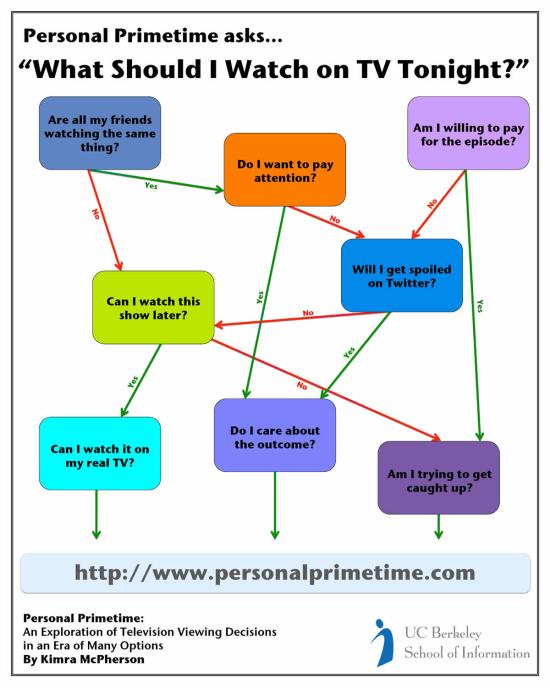Personal Primetime
These days, Americans are watching more television than ever— in more formats, at more times, and with more control over the experience. Likewise, the number of ways we can converse about television has grown dramatically; we may gather around a physical water cooler or send clips and quotes via e-mail, but we can also discuss shows live using Twitter, become fans of favorite series on Facebook, or sign on to a social viewing application to share our immediate reactions with friends and strangers. With DVRs and OnDemand and iTunes and Hulu at our disposal, we’re no longer tethered to a broadcast schedule set by television executives. We can watch what we want, when we want, and how we want.
So what do we want?
The explosion in both the number of ways we can watch television and the number of ways we can converse about it creates a complex set of interrelated decisions governing how people decide which television shows to watch and when and how to watch them. My goal in this final project is to conduct a qualitative study into how individual TV viewers make those decisions, with a particular focus on scheduling and time. Through in-depth interviews and a diary study with television viewers, and secondary research into the origins of and logic behind the primetime television schedule, I seek to answer the following questions: Does technology — both on the viewing side and on the conversing side — change, enhance, complicate, or add stress to the television experience? What factors drive decisions about when or how to watch particular shows? What kind of individual practices have people evolved to make the myriad of television options work for them?










